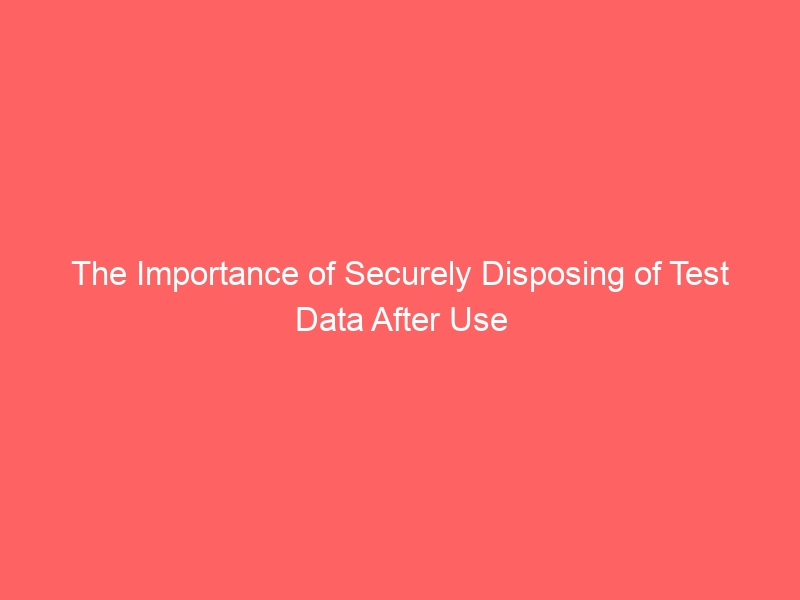In the world of development and IT, test data is essential. It allows us to validate functionalities, benchmark performance, and secure applications. While our dummy files are completely harmless, what about the test data generated during your processes, or even actual (though anonymized) production data used in staging environments? **Securely disposing of test data** is just as critical as its creation and use.
Neglecting proper data disposal can lead to security breaches, compliance violations, and unnecessary data accumulation. Let’s explore why and how to do it effectively.
Why Secure Data Disposal Matters
- Preventing Data Breaches: Even seemingly harmless test data, if it contains patterns or structures resembling real user data, can become a liability if exposed. Inadvertent leaks of old test environments are a common cause of data breaches.
- Compliance & Regulations: Laws like GDPR, CCPA, and HIPAA aren’t just for production data. If your test data contains any personally identifiable information (PII) or sensitive data, you’re obligated to manage and dispose of it securely.
- Resource Management: Storing old, unused test data consumes valuable disk space and can complicate backup strategies. Regular cleanup keeps your systems lean and efficient.
- Maintaining Data Integrity: Old test data might be accidentally used in future tests, leading to skewed results or confusion. Proper disposal ensures you’re always working with clean, relevant datasets.
Best Practices for Secure Test Data Disposal
1. Define a Data Retention Policy:
- Establish clear rules for how long different types of test data should be kept. This could vary based on project phase, compliance needs, or data sensitivity.
- Automate deletion processes where possible based on this policy.
2. Use Secure Deletion Methods:
- Not just ‘Delete’: Simply deleting files from an operating system’s file explorer or emptying the recycle bin doesn’t truly remove the data from the disk; it just marks the space as available.
- Overwriting: For sensitive data on physical drives, use tools that overwrite the data multiple times (e.g.,
shredon Linux, or specialized data erasure software) to make it unrecoverable. - Volume Deletion: For cloud or virtualized environments, ensure that deleting a volume or disk image truly purges the underlying data, not just logically removes it.
3. Sanitize Environments:
- Before re-provisioning a test server or virtual machine, ensure all existing data is wiped clean.
- For database test environments, routinely drop and recreate databases, or truncate tables, rather than just deleting rows.
4. Educate Your Team:
- Ensure all team members understand the importance of secure data handling and disposal.
- Implement standard operating procedures for managing test data lifecycle.
What About Our Dummy Files?
While our provided dummy files are inherently safe, they are still files that occupy space. Once you’ve completed your tests, you can simply delete them from your system like any other file. They don’t leave traces or require special disposal methods.
However, the data you generate *using* these files (e.g., logs, database entries, derived outputs) should always be handled according to your internal data disposal policies.
Secure data disposal is a cornerstone of responsible development and system administration. By making it a regular practice, you protect your organization, maintain compliance, and ensure the integrity of your testing processes.
For safe and reliable test files to get started, explore our collection today!
